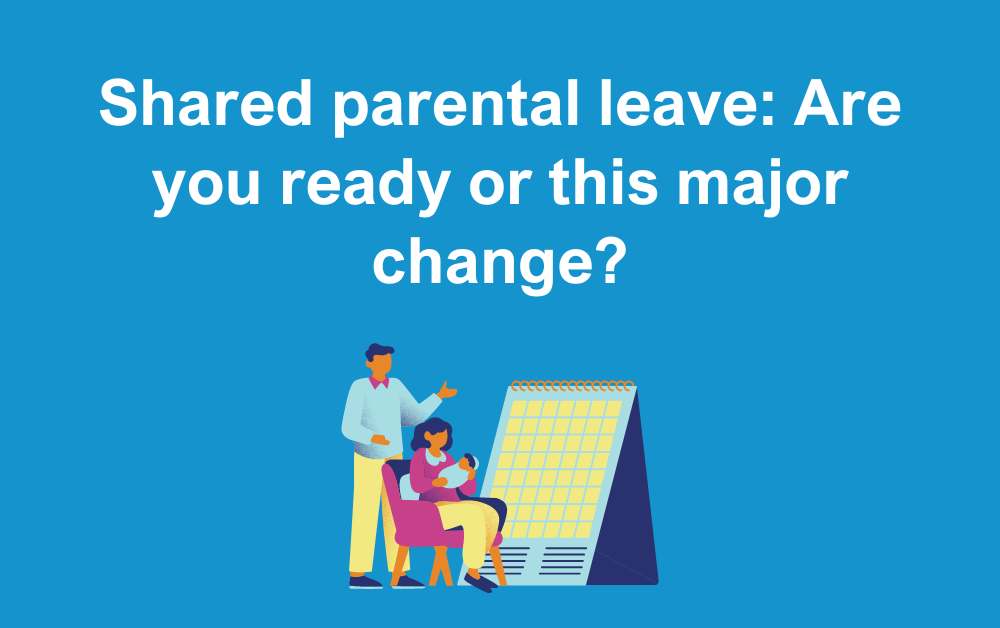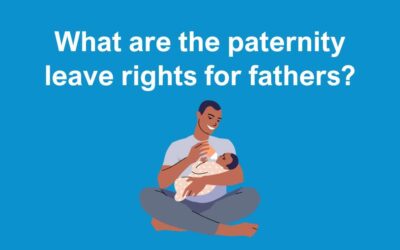From 5th April 2015, the final round of changes to “family-friendly” rights under the current government comes into effect. A new system of shared parental leave will replace additional paternity leave, for parents of babies due from 5th April.
So what is it?
Shared parental leave overlaps with a mother’s right to take maternity leave and exists alongside her partner’s right to take one or two weeks’ paternity leave. It replaces the right to additional paternity leave. However, not everyone qualifies for shared parental leave; both parents need to have at least 26 weeks’ service with their current employer and earn at least the minimum threshold needed to qualify for maternity allowance.
The basic idea is that the parents of a child (including adoptive parents) can decide how to divide a total of 52 weeks of leave between them. So, for example, the mother could decide to take just a few weeks’ leave to recover from the birth (there is still a compulsory two-week maternity leave period immediately following childbirth), with the rest of the leave being taken by her partner.
An important feature of the new scheme is that the periods of shared parental leave do not have to be consecutive. The two parents can take leave at the same time, provided that the total amount of leave taken does not exceed 52 weeks.
The Regulations even provide that – with his or her employer’s agreement – an individual can take discontinuous blocks of leave. This means, for example, that the mother can take leave for a period and then return to work while her partner takes some leave, with the mother then going on leave again for the remaining period.
Statutory shared parental pay is available for up to 39 weeks, reduced by the number of weeks of statutory maternity pay taken by the mother. However, it is paid only at the same flat rate as the lower rate of maternity pay. Only the mother can take the initial six weeks of leave at 90% of her weekly earnings.
Employers are likely to be worried about the administrative burden and uncertainty caused by the flexible nature of shared parental leave. The Regulations appear complicated, however I have been working with a couple of clients who have employees who wish to take advantage of Shared Parental Leave. Having gone through this with the clients and the employees concerned, it was not overly difficult and the most difficulties lay with the employees as they had to give careful consideration and notice around their intent to take this leave and meet the eligibility criteria.
Each parent must give eight weeks’ notice of his or her intention to take shared parental leave (in the mother’s case, this will be in addition to the notice that she must give in relation to her maternity leave). The employer is also entitled to see a copy of the child’s birth certificate and to be given the other parent’s national insurance number and the name and address of his or her employer.
Other than that, there’s not really more to it! Naturally, complications may set in if the parents want to take the leave in blocks, with a period of work in between, but this can be done only if the employer agrees. There is no requirement for the employer to give the request reasonable consideration and no limitation on the employer’s ability to refuse. Usually the parents will have two different employers and they may find themselves in a difficult position if one employer agrees to the discontinuous leave and the other refuses. There is no need for the two employers to confer or reach agreement between them as to the pattern of leave to be taken.
The best advice that can be given to employees is to think about what pattern of shared parental leave they want and make the request early. If one of the employers then refuses a request for leave to be taken in blocks, they will have time to give fresh notice of continuous leave, for which the employer’s agreement is not needed.
My advice would be to engage in conversations with any mums or dads to be, and establish their intentions. If you have good communication channels with your employees anyway, then this won’t be too much of a change for you. It’s also good to develop a clearly worded policy that will guide employees through the process of taking shared parental leave, something we have been doing with our clients recently.
Communication is the key to making this work, and with good relationships with your people, and cooperation on both sides, there is no reason why shared parental leave will not run just as smoothly as maternity leave does just now.
How much change the introduction of shared parental leave will mean in practice remains to be seen. There is still a strong cultural and social bias towards the mother’s taking the leave while the father – after a short break – continues to work. We probably have a long way to go before mothers and fathers are taking equal periods of leave following the birth of a baby. Recent research indicates that 2/3s of fathers are open to taking shared parental leave, however we will see how this materialises in practice. In my opinion, where the mother is the higher earner, I could see a situation arise where the mother would return to work and the father takes a period of leave to look after the child. At the moment, only 1% of eligible fathers take the current time off under the parental leave legislation so we’ll need to wait and see how this develops.
Shared parental Leave key facts
- After 2 or 4 weeks’ compulsory maternity leave following the baby’s birth, a mother can opt to take the remaining leave as “shared parental leave” – which can then be shared with the baby’s father
- Both parents can take leave at the same time
- Leave can be taken in several separate “blocks”
- All leave must be used by the baby’s first birthday



